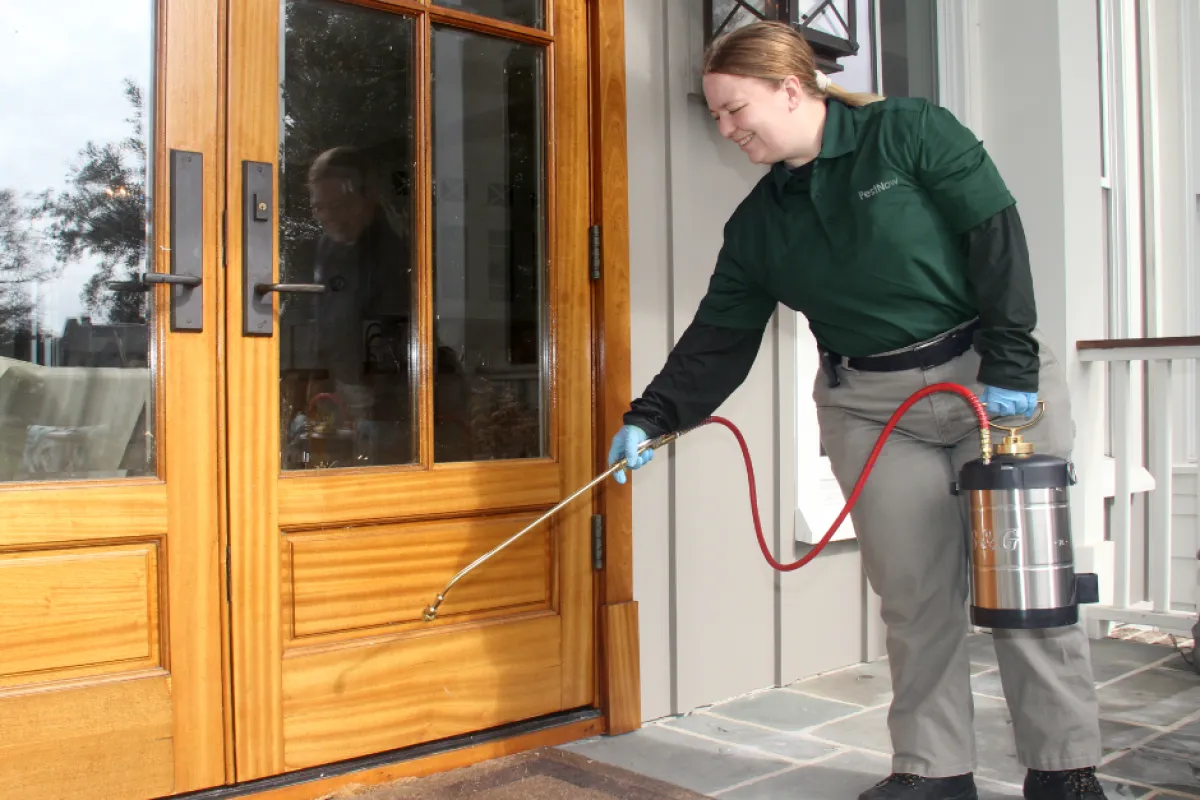A1 Bed Bug Exterminator Charlotte - Specialized Bed Bug Removal
A1 Bed Bug Exterminator Charlotte - Specialized Bed Bug Removal
Blog Article
Bed Bug Treatment Break Down: Comparing Chemical Vs. Non-Chemical Solutions
In the world of insect control, especially when handling the consistent concern of bed insects, the selection between chemical and non-chemical therapy solutions can be a pivotal one. Both approaches provide distinct advantages and drawbacks, influencing factors such as effectiveness, safety and security factors to consider, and general cost. By taking a look at the nuanced information of each approach, a more clear understanding of which path to pursue in addressing a bed pest problem can be attained.
Effectiveness of Chemical Treatments
Chemical therapies for bed bug problems have been widely recognized for their fast and potent efficacy in eradicating these bugs. When considering the effectiveness of chemical treatments, it is crucial to understand that they can supply a detailed and fast service to a bed insect trouble. Professional pest control operators frequently count on pesticides to target bed pests at different stages of their life process, including grownups, nymphs, and eggs. These chemicals commonly work by interrupting the bed pests' nerve system, leading to paralysis and eventual fatality.
Moreover, chemical treatments have the advantage of supplying recurring results, indicating that they can remain to eliminate bed insects even after the first application. This residual activity is specifically helpful in combating any prospective re-infestations. Furthermore, the rapid activity of chemical treatments can bring alleviation to individuals encountering extreme bed bug infestations, allowing them to restore control of their living rooms quickly.
Safety And Security Worry About Chemical Solutions
One crucial facet that needs careful consideration when using chemical options for bed pest treatment is ensuring the safety of owners and the environment. While chemical therapies can be effective in removing bed insects, they may present threats if not taken care of properly. One of the primary safety and security worry about chemical solutions is the prospective injury they can cause to human health. Exposure to certain chemicals used in bed bug therapies can result in breathing problems, skin inflammation, or other unfavorable responses, especially in individuals with pre-existing conditions or sensitivities. Additionally, improper application or dose of chemical pesticides can cause poisonous deposits sticking around in the cured location, posing long-term health dangers to occupants.
In addition, the ecological effect of chemical remedies is another substantial factor to consider. Some pesticides made use of in bed bug treatments might be unsafe to valuable bugs, wild animals, and ecological communities if they leach into the dirt or water systems. It is necessary to utilize chemical treatments judiciously, following security guidelines, and considering much less toxic choices to mitigate these dangers and ensure the effective and risk-free administration of bed insect infestations.
Advantages of Non-Chemical Strategies
Thinking about the potential safety concerns and environmental impact connected with chemical options for bed bug therapy, exploring non-chemical approaches provides an appealing choice with a number of distinct benefits. Non-chemical approaches use a safer choice for households, specifically those with pet dogs, children, or people conscious extreme chemicals. These strategies get rid of the dangers of exposure to poisonous substances, reducing the capacity for damaging health effects. Additionally, non-chemical therapies are eco-friendly, as they do not contribute to air or water air pollution, making them a sustainable choice for bug control.
Additionally, non-chemical options can be reliable in targeting bed pests, consisting of hard-to-reach locations where chemical treatments may not penetrate - A1 pest control charlotte nc bed bugs. Methods such as warm therapy, vacuuming, vapor cleaning, and bed mattress coverings supply extensive elimination without the use of dangerous chemicals.
Limitations of Non-Chemical Treatments

In addition, non-chemical therapies commonly need numerous applications to accomplish successful obliteration. This can be taxing and might not always ensure complete removal of all bed bugs and their eggs, specifically in hard-to-reach or surprise places.
Additionally, the success of non-chemical therapies greatly depends on appropriate implementation and thoroughness, which can be challenging for individuals without professional proficiency. Inadequate application of non-chemical approaches may cause insufficient obliteration, resulting in persistent invasions and the requirement for additional treatments.
Therefore, while non-chemical therapies have their advantages, it is important to recognize these limitations and consider them when identifying one of the most efficient strategy for see page taking care of bed insect infestations.
Price Contrast: Chemical Vs. Non-Chemical Options
Offered the restrictions associated with non-chemical treatments, a crucial facet to assess in the context of bed bug monitoring is the cost comparison in between chemical and non-chemical options. In contrast, non-chemical therapies like heat treatment or steam can be much more expensive, with expenses varying from $1,000 to $6,000 for a whole home. While the initial price of chemical therapies may seem lower, numerous treatments might be needed to completely get rid of the infestation, potentially increasing the overall expense.
Conclusion

Considering the potential safety problems and environmental effect associated with chemical solutions for bed insect therapy, checking out non-chemical strategies provides an appealing option with several unique advantages.Given this content the constraints associated with non-chemical treatments, an important aspect to review in the context of bed pest management is the cost comparison in between chemical and non-chemical choices. In comparison, non-chemical therapies like warm treatment or heavy steam can be more expensive, with costs varying from $1,000 to $6,000 for a whole home. While the first expense of chemical therapies might seem lower, multiple treatments might be required to completely remove the infestation, potentially boosting the total price.In pest control orange county verdict, when contrasting chemical and non-chemical bed insect therapy options, it is vital to take into consideration efficiency, security, advantages, limitations, and expense.
Report this page